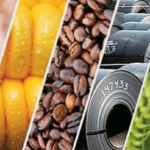With tensions escalating in the Middle East, oil prices surged on the morning of June 18, continuing the upward trend from the previous day. WTI crude oil traded at $75.5 per barrel, marking a significant increase of $2.4 from the previous day’s rates. Meanwhile, the price of Brent crude oil neared the $77 per barrel mark, reflecting a rise of $2.5.
According to the latest data on Singapore’s fuel market as of June 16, the trading price for RON 92 gasoline reached $83.1 per barrel, while RON 95 gasoline traded at $85.1 per barrel. These figures represent a substantial increase of over $6 per barrel compared to the previous week.
In anticipation of these global oil price fluctuations, domestic fuel businesses have predicted a sharp increase in Vietnam’s fuel prices for June 19. Specifically, the price of RON 95 gasoline is expected to surge by VND 1,210 per liter, while E5RON 92 gasoline is projected to increase by VND 1,100. Moreover, oil prices are forecast to witness even higher hikes, ranging from VND 1,160 to VND 1,340 per liter.
If these predictions hold true, it would mark the fourth consecutive price increase for gasoline in Vietnam. In the latest adjustment period on June 12, the authorities decided to raise the price of E5 RON 92 gasoline by VND 200 to VND 19,460 per liter, while RON 95 gasoline witnessed a VND 270 increase to VND 19,960 per liter. Simultaneously, diesel oil prices climbed by VND 280 to VND 17,700 per liter, and kerosene prices rose by VND 230 to VND 17,510 per liter. Mazut oil experienced the most significant hike, with a VND 290 increase to VND 16,460 per kg.

Domestic fuel prices are expected to surge on June 19.
The Department of Domestic Market Management under the Ministry of Industry and Trade attributed these price fluctuations to the ongoing Russia-Ukraine conflict and escalating tensions in the Middle East, which have collectively pushed global oil prices upward. This situation could potentially impact Vietnam’s fuel imports and domestic supply.
Experts warn that if these issues persist without effective resolution, oil prices will remain volatile in the foreseeable future.
To ensure a stable supply of fuel for domestic production and business activities, the Department of Domestic Market Management has requested that fuel traders and distributors strictly adhere to the assigned minimum fuel volume for 2025, encompassing both quantity and variety. They must also abide by their registered fuel supply plans submitted to the Ministry of Industry and Trade.
Market management authorities have instructed these entities to proactively secure fuel sources, including domestic production and imports, maintain fuel reserves as stipulated, and devise contingency plans to address potential supply disruptions. These measures aim to guarantee an adequate fuel supply for the domestic market under all circumstances.
The Ultimate Guide to Investing: Oil Surges to 2-Month High, Gold Shines, Sugar Plunges to Near 4-Year Low
As of the market close on June 11, 2025, oil prices surged over 4% to a two-month high amid escalating Middle East tensions. Gold prices maintained their upward trajectory, buoyed by lower-than-expected US inflation data and expectations of an early Fed rate cut. Copper prices, however, took a hit due to concerns over Chinese demand and protracted trade tensions. Raw sugar plunged to a near four-year low, while coffee prices also witnessed a decline.
The Energy Market on June 7: Oil Prices Continue to Surge, Gold Plunges Over 1%
The energy complex continued its upward trajectory on June 6th, with oil prices extending gains. Silver shone brightly, surging to a 13-year high, while platinum reached a 3-year peak. However, gold suffered a sharp decline, dropping over 1%. Raw sugar prices remained subdued, languishing at a 4-year low.





































